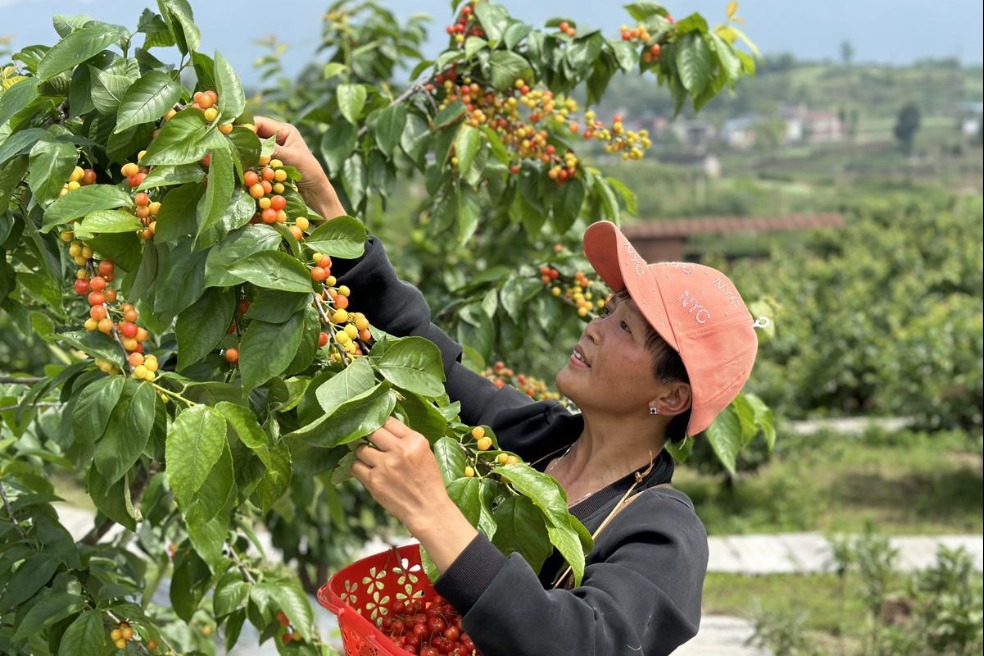Sustained efforts needed to control swine fever, UN official warns


The risk of African swine fever spreading further is "high" in China, where it has already caused heavy losses to the pig industry, and sustained efforts are needed to get the disease under control, the Food and Agriculture Organization of the United Nations warned.
As of Friday, 41 cases of ASF had been reported in China, resulting in more than 100,000 pigs being culled, Vincent Martin, FAO representative in China and the Democratic People's Republic of Korea, said in an exclusive interview with China Daily.
"We believe ASF will bring serious economic losses to China's pig industry, but it is still too early to quantify the economic and social impact," Martin said.
We also think there is still a high risk for the disease to spread further, and all efforts should be maintained and control measures strengthened to keep the disease under control."
China reported its first-ever outbreak of African swine fever in Shenyang, Liaoning province, on Aug 1, and the disease has since been reported in more than 10 provinces, municipalities and autonomous regions. The disease has a high mortality rate for pigs, but it does not affect humans. China is the world's largest producer and consumer of pork.
The latest two outbreaks were reported on two hog farms in Yiyang and Changde in Hunan province on Monday, with a total of 48 pigs succumbing to the disease, the Ministry of Agriculture and Rural Affairs said on Tuesday.
Local authorities have responded immediately following the outbreaks and carried out quarantine measures, and the outbreaks have been brought under control, it said.
Over the past few months, the ministry has taken a series of active and stringent measures to contain ASF, including strict controls on the movement of pigs and pork products, increased compensation prices for culling pigs to encourage early ASF reporting, and banning the use of blood plasma in pig feed, Martin said.
"Despite the strong commitment of the Chinese authorities, important challenges remain to curbing the spread of the disease and enforcing ASF prevention and control measures in the field," he said, citing reasons including that China possesses almost half of the world's pig population, often in high density enclosures, and that the ASF virus can survive long periods in both cold and hot conditions, and even in dried and processed pork products.
"The current ongoing ASF epidemic shows that it is everyone's business, which requires a food system approach to allow all stakeholders to play their roles actively from farm to fork, across public and private sectors," he said. "It needs strong cooperation and information sharing across sectors that don't necessary talk to each other in normal situations."
"A lot of work also still needs to be done to raise awareness among small farms and all actors along the value chain on the importance of the disease, so that each and every one can contribute to this national effort," he said.
"Enhancing biosecurity is also of paramount importance and requires a lot of education and training for farmers to understand the concept and apply good management practices on their farm."
FAO also wishes to strengthen its cooperation with the Chinese government to design and carry out more projects on capacity development for the control of transboundary animal diseases under the Belt and Road Initiative, he said.
Following the outbreaks in August, authorities have intensified monitoring over the pork market and taken measures to ensure supply. And the disease has not caused a big impact to pork supply nationwide, Tang Ke, chief of market and information at the ministry, said at a news conference last week.
The ministry said on Wednesday that China faces severe challenges in controlling ASF, and the ministry will continue efforts to eliminate risks of the disease spreading.
- Eight dead after minibus collision
- Chinese PLA navy to celebrate 75th founding anniversary with series of events
- Student detained on suspicion of the death of his roommate
- Smart teaching system launched for international Chinese learning
- Shanghai prepares to open parks 24 hours a day
- Action taken over Chongqing Gas Group overcharging



































